Internal Air Quality (IAQ) often falls under the responsibility of Building Management for several reasons:
- Infrastructure Oversight:
- Building Management is responsible for overseeing the infrastructure and systems within a facility, including ventilation, heating, and air conditioning.
- IAQ is directly influenced by these building systems, making it a natural extension of Building Management’s purview.
- HVAC System Management:
- The Heating, Ventilation, and Air Conditioning (HVAC) system plays a crucial role in maintaining IAQ.
- Building Management is responsible for the maintenance, operation, and optimization of HVAC systems to ensure they contribute positively to IAQ.
- System Monitoring and Maintenance:
- Building Management routinely monitors and maintains building systems.
- Regular inspection and maintenance of ventilation systems, air filters, and other components that impact IAQ fall within the scope of Building Management responsibilities.
- Occupant Comfort:
- Building Management aims to create a comfortable and efficient working environment for occupants.
- IAQ directly influences occupant comfort, and Building Management is tasked with addressing factors like temperature, humidity, and air circulation to enhance overall comfort.
- Energy Efficiency:
- Building Management often seeks to optimize energy efficiency within a facility.
- Efficient HVAC systems contribute to both energy savings and improved IAQ. Building Management ensures that these systems operate effectively to achieve both goals.
- Facility Planning and Design:
- Building Management is involved in the planning and design of building spaces.
- Considering IAQ factors during the design phase and implementing measures for effective air circulation and pollutant control are part of the proactive role Building Management can play.
- Occupant Safety:
- Building Management is responsible for ensuring the safety of occupants within the building.
- Poor IAQ can pose health risks, and Building Management takes measures to address air quality concerns to maintain a safe indoor environment.
- Emergency Response:
- In the event of IAQ issues or emergencies, Building Management is often the first point of contact.
- Quick response to address IAQ problems, such as identifying and rectifying ventilation issues, falls within the realm of Building Management’s responsibilities.
In summary, the responsibility for IAQ within Building Management stems from its role in overseeing building systems, maintaining infrastructure, and creating a conducive and safe indoor environment for occupants. Collaboration with other departments, such as Health and Safety, is essential for a comprehensive approach to managing IAQ within a facility.


